Introduction to Electrical Switches
Electrical switches are simple but essential devices found in every home and electrical system. A switch opens or closes an electrical circuit, effectively turning power off or on to lights, appliances, and other devices. In other words, flipping a switch either breaks the flow of electricity or completes the path so current can flow.
This ability to control the flow of electricity is why switches are so important. They let us safely and conveniently control our electrical equipment at will. Nearly every electrical circuit will include at least one switch to allow the user control over the circuit’s operation.
From the lights in our ceilings to the power buttons on our gadgets, switches give us the power to turn things on when we need them and off when we don’t.
There are many kinds of switches, but this guide will focus on four main types of electrical switches that you encounter frequently: the Toggle Switch, Rocker Switch, Push Button Switch, and Slide Switch. Each works a bit differently and has its own typical uses.
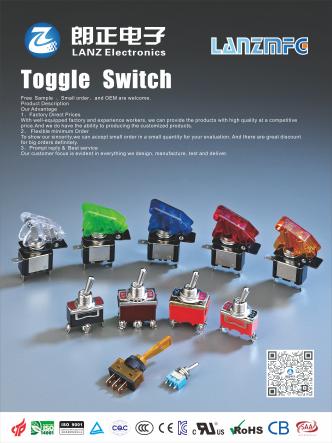
Toggle Switches
Toggle switches use a lever or handle that you flip up and down to open or close a circuit. When you flick the lever into one position, the internal contacts close and electricity flows, turning a device on. Flick it the other way and the contacts open to break the circuit, turning the device off.
The toggle action typically latches in place, meaning the lever stays in the position you set until you flip it back. This gives a clear visual and tactile indication of whether the switch is on or off.
Toggle switches are one of the most familiar switch types. They are the classic light switches that likely come to mind first. They have been common in households for decades, especially in older homes for wall lighting. Beyond home lighting, toggle switches are widely used in many applications.
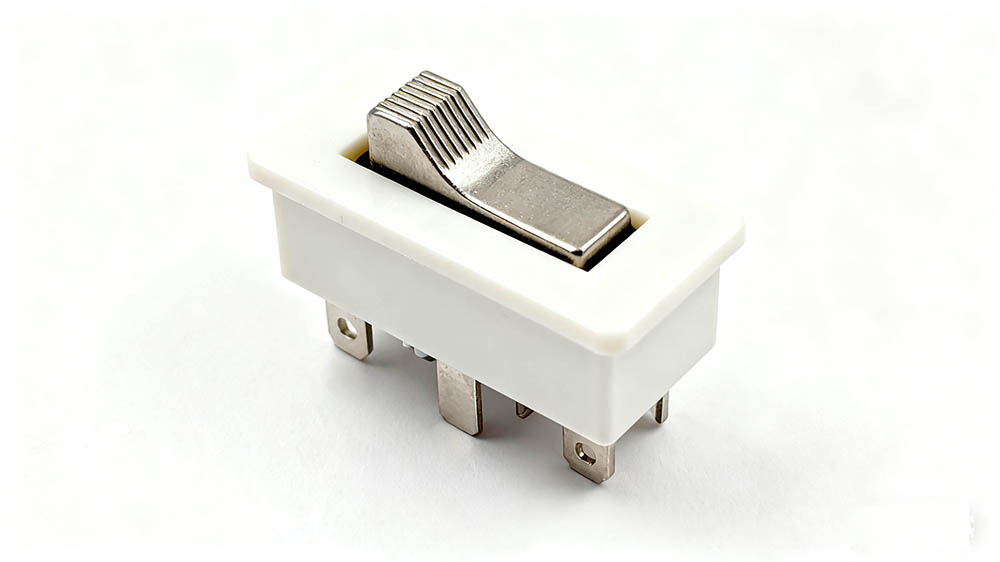
You will find them as power switches on some equipment and tools, on instrument panels, and even on electric guitars due to their reliable action. Key features of toggles include a satisfying mechanical click and a protruding lever that is easy to grip.
Rocker Switches
Rocker switches perform the same basic function as toggle switches. They make or break a circuit, but use a flat pivoting paddle instead of a protruding lever. One side of the rocker is pressed down to turn the circuit on, and the opposite side is pressed to turn it off. Internally, it tilts on a pivot point to open or close the contacts. Like toggles, most rockers stay in the selected on or off position until pressed again on the other side.
Rocker switches have become very common in modern homes and appliances, often preferred for their sleek and low profile design. In the UK and much of Europe, the large rectangular wall switches for lights are usually rocker switches.
Key features of rockers include a wider surface area that is easy to press, and they sit almost flush with the wall or panel. Because the rocker button does not stick out far, it is less likely to snag on clothing or be accidentally hit.
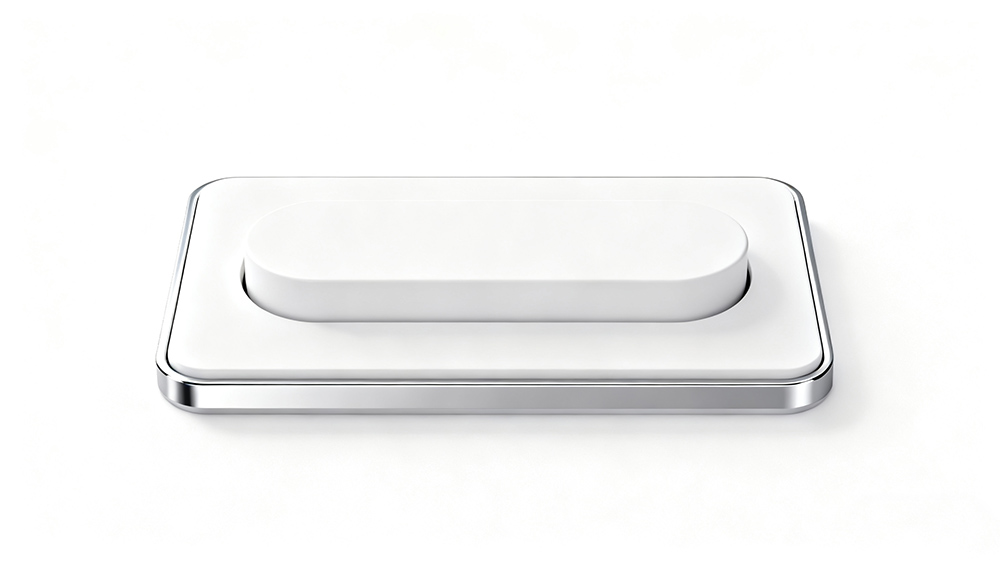
Rocker switches are used not only for lighting but also as power switches on power strips, appliances, and many kinds of electronic equipment.
Push Button Switches
Push button switches are actuated by pressing a button straight inwards. When you push the button, it either completes or breaks the circuit, and when you release, the button returns to its original position if it is a momentary type.
Most push buttons have an internal spring mechanism that makes the button pop back out after you let go. This momentary action is common in devices like doorbells or keyboard keys. The circuit is only connected as long as you are holding the button down. However, not all push buttons are momentary.
There are also latching push button switches. Pressing the button once will lock it in the pressed position, keeping the circuit on, until you press it again to release.
Push button switches come in all shapes and sizes, from tiny PCB mounted buttons on electronics to large industrial push buttons. Key features include the round or square button cap and often very tactile feedback.
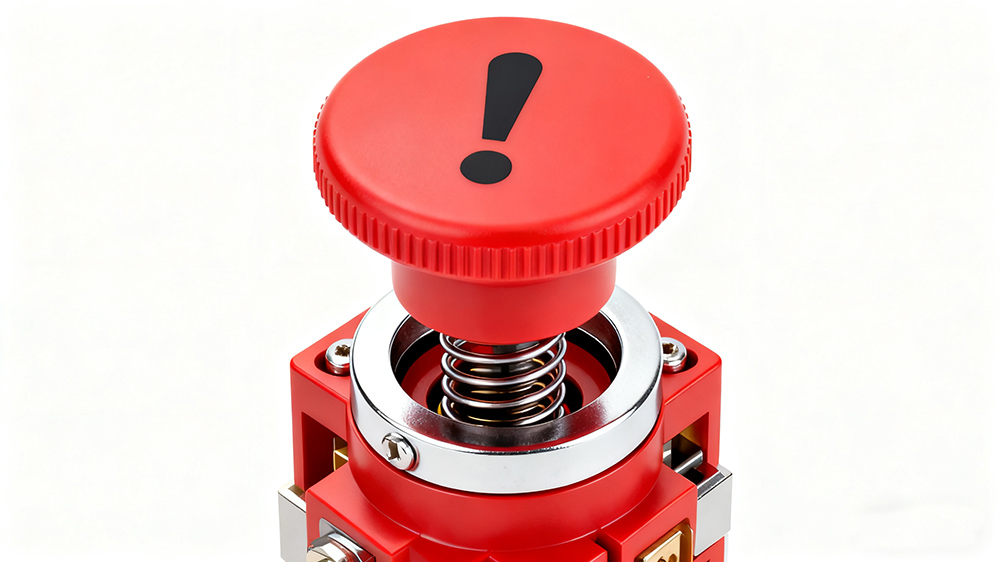
Everyday examples include doorbells, computer or phone power buttons, and reset switches on electronics. Push buttons are valued for their straightforward operation and the fact that they can be made rugged and weather resistant for outdoor or industrial use.
Slide Switches
Slide switches make or break a circuit by sliding a knob or lever in a straight line from one position to another. Instead of pushing or flipping, you move a slider to one side to close the circuit or to the opposite side to open it.
The slider typically stays in the position you leave it until you slide it back. Most slide switches have at least two positions such as ON and OFF.
Slide switches are generally used for smaller devices and circuits. They are best suited for low voltage and low current applications. You have probably seen slide switches on items like battery powered electronics, toys, and gadgets. For example, the little on off switch on a flashlight or a portable radio is often a slide switch.
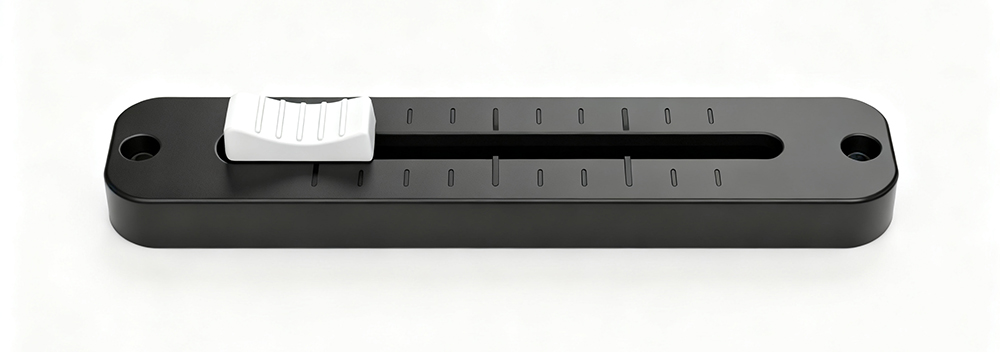
Key features of slide switches include their compact size and low profile, which is useful for space constrained designs. They also give a clear visual indication of their setting. You can often see the position of the slider and know if it is on or off at a glance.
Choosing the Right Switch for Your Needs
Now that we’ve explained toggle, rocker, push button, and slide switches, how do you decide which type of switch is best for your project or home? It ultimately comes down to your specific needs and preferences. Here’s a quick summary:
Function and Action
Do you need a momentary action such as a doorbell or reset button? If so, a push button is ideal. Do you need the switch to stay in place once toggled on or off? Toggle, rocker, or slide switches will give a maintained on/off state.
Application and Environment
For wall light switches in your home, both toggles and rockers work well. For small electronic devices or toys, a slide switch is often the best choice. Push buttons suit control panels, bells, and start/stop functions.
Electrical Load
Always ensure the switch is rated for the voltage and current of your circuit. A tiny slide switch cannot handle mains voltage, while a rocker or toggle designed for appliances can.
Design and Aesthetics
Toggles have a traditional appeal, rockers offer a clean modern look, push buttons are intuitive, and slides are compact and unobtrusive.
Ease of Use
Rockers and push buttons are easiest for all ages, toggles give a very clear state indication, and slides are good for set-and-forget settings.
Final
All four types of switches, namely toggle, rocker, push button and slide, achieve the same goal of controlling a circuit but each in a unique way. Toggles give you a classic lever action, rockers offer a modern paddle, push buttons provide quick fingertip control, and slides allow compact switching.
Understanding how each works and where they excel will help you make an informed decision for your home, project, or device. If you are planning a project, take a closer look at these options and choose the switch that fits your needs. Start exploring your choices today and put your knowledge into action.
 +86 138-6870-3133
+86 138-6870-3133 sales@lanzmfg.com
sales@lanzmfg.com EN
EN CN
CN Search
Search